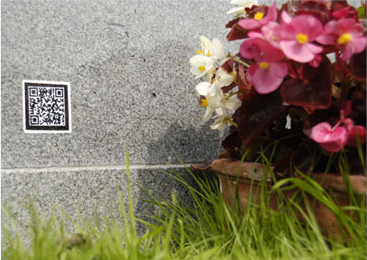QR codes give access to your memorial after your death

Some people do not have time to prepare their online properties before their death. Will they be remembered for their last blog post, last status update on Facebook or their last tweet?
And how will we access the messages from our loved ones? QR codes perhaps?
I had never really considered what would happen to my online musings after I’m gone – until I read The Last Post by journalist Derek K Miller who died of cancer in May 2011.
His friends posted his final message after he died. His final post is really moving and is a tribute to his family and friends. He prepared his message, making sure that his last words were what he wanted them to be.
I also have not thought about my online memorial -- and what my friends might post on my Facebook wall. I also do not tweet as though each tweet might be my last.
Sometimes a flippant message might be the last message you ever send. Rapper Ervin McKinnis tweeted ‘'Drunk af going 120 drifting corners #F***It. YOLO’ (You Only Live Once).
Minutes later his car hit a wall in Ontario Canada, killing everyone in the car. Was his final tweet the message that he would have wanted to be remembered for?
Online memorials

Technology is now helping us to remember our loved ones with a permanent reminder on their memorials.
Funeral companies in Denmark have added pointers that honour the dead with a link to their online presence. Gravestones now can have QR codes linking to an online memorial commemorating the life of the loved one.
The concept has also been adopted in the UK and the US. In the UK companies like QR memories manages the memorial web site and the insertion of the QR code onto the headstone. In the US, Living Headstones adds interactivity to the memorial.
QR challenges
Adding current technology to a memorial that is intended to last for hundreds of years throws up its own challenges. If the QR code is etched onto the gravestone, as the gravestone weathers the code will become difficult to read.
The headstone will need to be cleaned before the QR code can be accessed. Codes etched into sandstone or granite will weather over the years. One solution could be to lithographically etch the QR code onto coated gold or platinum to keep the code readable but this might be impractical and costly.
Another challenge is the technology itself. QR code technology has been around for 20 years or so. A different 2D barcode technology could replace the QR code in another 20 years making QR codes obsolete and unreadable.
Further into the future historians might struggle to decipher the codes. Perhaps the initially indecipherable Mayan glyphs were similarly coded for the technology of the day, now long gone.
Accessing your online life
Facebook walls tend to become an online memorial for messages to comfort family and friends after someone dies. A Facebook app, If I die can be configured to release your messages or a video from beyond the grave. Three verified trustees from your Facebook friends notify the app of your death to release the message.
Asset lock guarantees that your important documents can be given to your family in the event of your death or illness. Deathswitch releases passwords to your family and friends to access after you have gone.
The challenge with all of these online concepts is access to the site in five, 10 or 50 years time. Will the web site provider still be around for tens or hundreds of years? Who will update and maintain the domain name leading to the online memorial? Who will manage the site itself or pay the upkeep costs?
URL technology may well change in 20 years time. I might outlive all of the technology that is currently being put in place to help me deliver my message after I’m gone. New technology will oust the current iteration of the cloud and data stores.
Perhaps I will have a simple inscription on my headstone and a document written on acid free parchment or vellum. For a lasting memorial, the written word might do just fine.